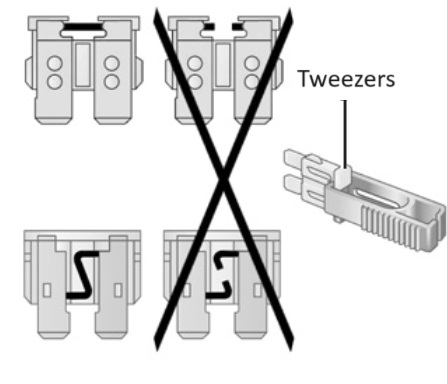Where are the fuses and relays in cars.
Fuses and relays are an integral part of the electrical infrastructure of modern cars. They protect electrical circuits from overvoltage and short circuits, thereby preventing damage to electrical equipment. Fuses and relays are most often located in blocks that are installed in the engine compartment and in the passenger compartment.
Despite the general recommendations for the location of fuse boxes, it is important to remember that each brand and model has its own characteristics. For example, in some Mercedes-Benz models, the fuse box may be hidden in the rear of the passenger compartment, while in Ford vehicles it may be located under the hood with additional access from the passenger compartment.
In order to determine the location and type of fuses, it is worth referring to the owner’s manual. In most cases, manufacturers provide a diagram indicating what each fuse is responsible for.
To find a fuse and relay diagram, select the car model you are interested in.
Why do we need fuses in a car?
Fuses perform an important functional task. They are necessary to protect the electrical components of the car from damage caused by high voltage or improper connection. If the current exceeds the set level, the fuse blows, ensuring that the electrical circuit is broken.
For a better understanding, it is important to consider the main reasons why fuses can trip. These include:
- Short circuit – occurs when two conductors touch each other or are brought into contact with the ground.
- Overload – occurs when the current in the circuit exceeds the permissible values due to too much equipment being connected.
- Technical malfunctions – sometimes a fuse can trip due to internal problems inside the devices.
How do fuses work?
A fuse is made up of a wire or strip of metal that melts when the temperature (caused by current) exceeds a certain limit. Once the fuse blows, the circuit is broken and electricity cannot flow any further.
There are several types of fuses:
Glass fuses – These are commonly used in older cars. They have a transparent body that allows you to visually determine if the fuse has blown.
Micro fuses – Modern cars use micro fuses, which are more compact and can prevent damage to thinner wires.
Thermal fuses – These react to temperature and can trip for reasons other than overload.

To replace the fuse, use special tweezers, which are installed in the fuse boxes in the passenger compartment or in the engine compartment, each model has its own location of the tweezers. The relay is removed manually.
































